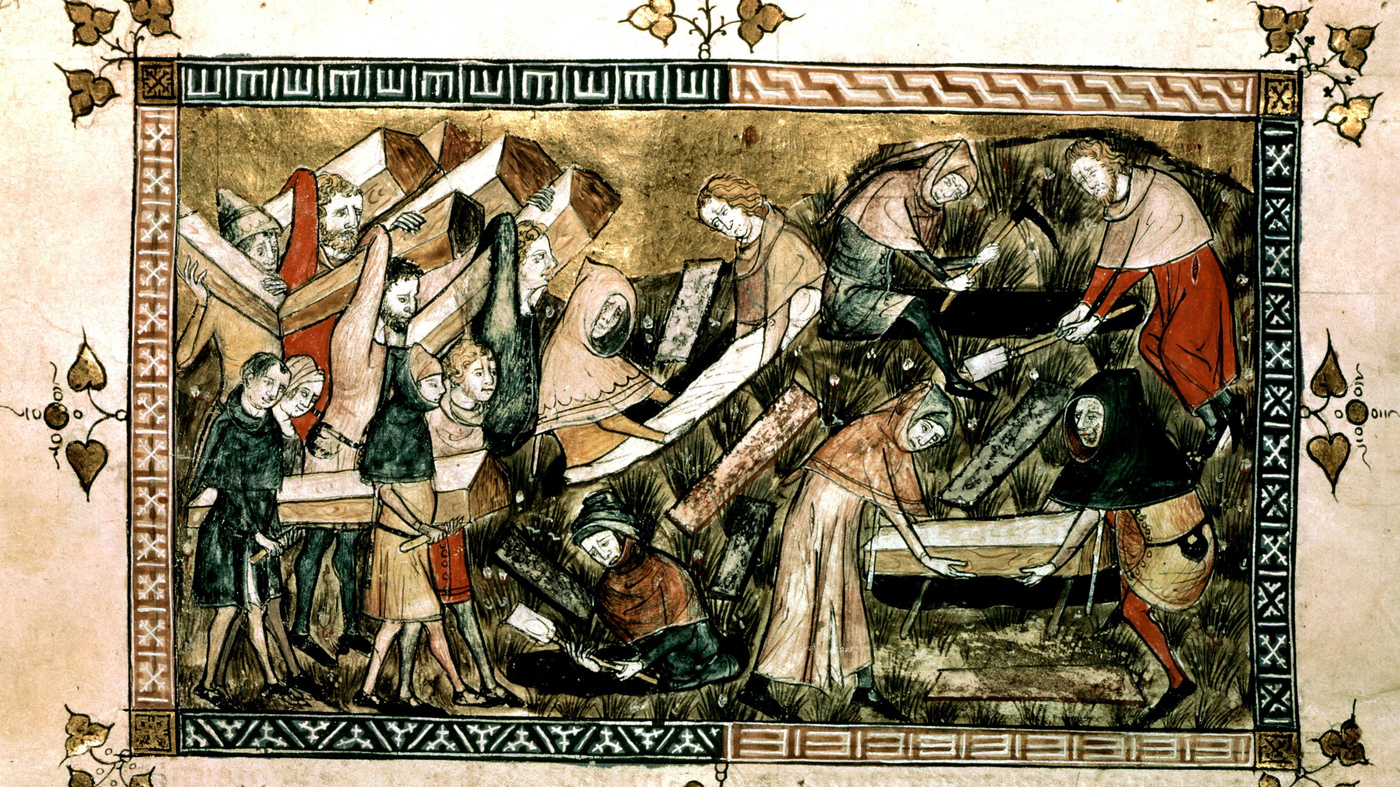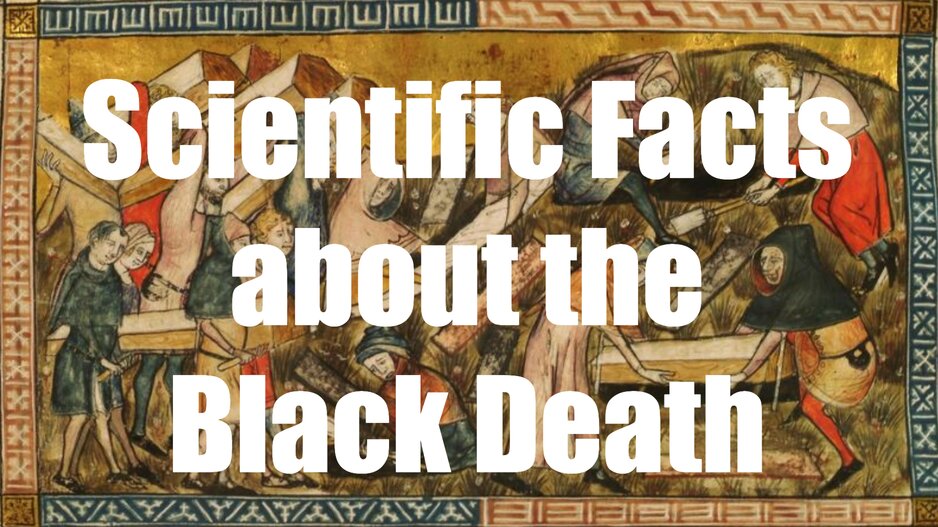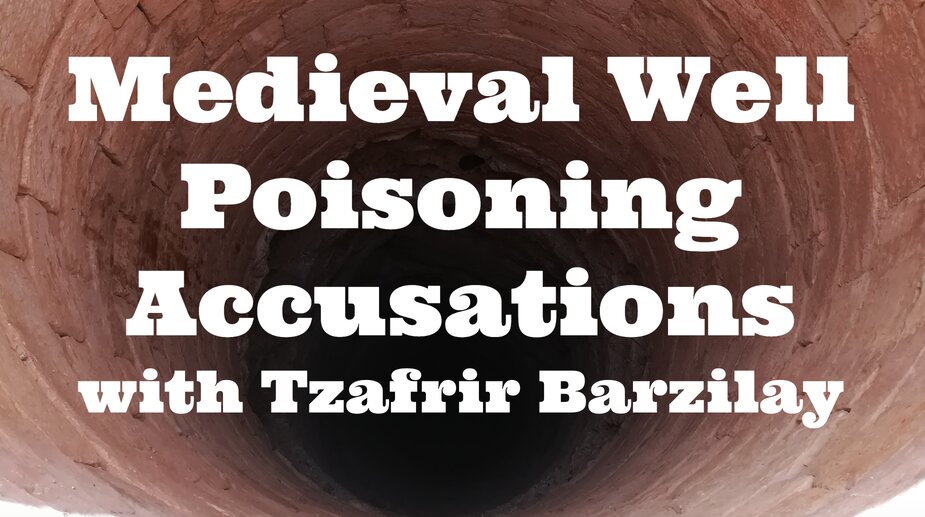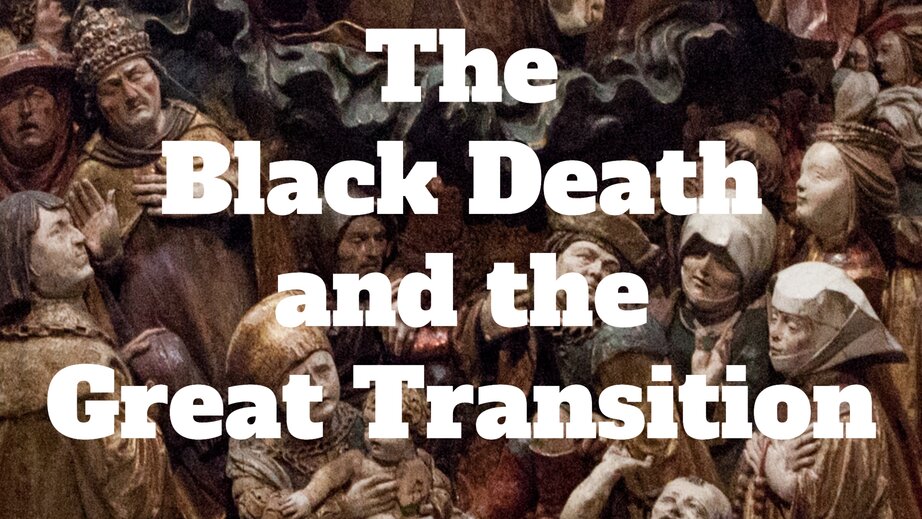Priests and the Black Death: Faith Amid Plague
When the Black Death swept through Europe, priests were among those who paid the highest price. Risking their lives to comfort the dying, they stood on the front lines of faith against the deadliest plague of the Middle Ages.
What the Black Death Can Teach Us About Childhood Malnutrition and Adult Health
A new study of medieval skeletons reveals how childhood malnutrition shaped survival during the Black Death—and contributed to poorer health in later life.
English Towns Recovered from the Black Death Faster Than Expected, Study Finds
The Black Death devastated English towns, wiping out more than half their populations—but did they ever fully recover? A new study finds that urban centers like Nottingham rebounded much faster than previously believed, with migration and economic shifts driving their revival in the decades after the plague.
New Medieval Books: The Stone Witch of Florence
Set in Florence at the height of the Black Death, this novel tells the story of a woman who returns from banishment to help save the city and uncover a conspiracy. It’s a blend of historical fiction and fantasy, with a bit of magic.
New Medieval Books: The World the Plague Made
At over 600 pages, this comprehensive study of the Black Death provides a global perspective on the pandemic and its aftermath. It explores how this medieval plague reshaped societies worldwide, creating both winners and losers in its wake.
Black Death Genomes: Uncovering Medieval Genetic Clues
A new project aims to uncover how genetic traits from the Black Death era shaped human populations, providing insights into disease susceptibility that may still affect us today. Led by Harald Ringbauer of the Max Plank Institute, the research team will analyze the genomes of 500 victims to link medieval and modern genes in an unprecedented way.
Body lice may have spread the Black Death more than previously thought
A new laboratory study suggests that human body lice are more efficient at transmitting Yersinia pestis, the bacterium that causes plague, than previously thought, supporting the possibility that they may have contributed to past pandemics. The research was published today in the open-access journal PLOS Biology.
New website tells the story of medieval people through their bones
Researchers at the University of Cambridge have created the website ‘After the Plague: Health and History in Medieval England’ that makes use of skeletal remains to detail everyday lives during the era of the Black Death and its aftermath.
The evolution of the Black Death pathogen tracked in new study
German and Danish researchers have identified genetic factors that were acquired by the pathogen Yersinia pestis as it evolved from its medieval version to the modern plague pandemic in the 19th century.
New Medieval Books: Merits of the Plague
Part of Penguin Classics, this is a translation of an early fifteenth-century work about the Black Death and plagues. Written in Egypt, it is a valuable addition to our understanding of the pandemic and how people reacted to it.
The Plague in Denmark: New research on its spread during the Middle Ages
Scientists who study the origins and evolution of the plague have examined hundreds of medieval human teeth from Denmark, seeking to address longstanding questions about its arrival, persistence and spread within Scandinavia.
New study examines the evolution of Yersinia pestis and how it led to the Black Death
The study features an analysis of more than 600 genome sequences from around the globe, spanning the plague’s first emergence in humans 5,000 years ago, the plague of Justinian, the medieval Black Death and the current (or third) Pandemic, which began in the early 20th century.
Scientific Facts about the Black Death
Here are nine scientific facts about the Black Death, ranging from when it started to the role of animals.
Black Death shaped evolution of immunity genes, setting course for how we respond to disease today
An international team of scientists who analyzed centuries-old DNA from victims and survivors of the Black Death pandemic has identified key genetic differences that determined who lived and who died, and how those aspects of our immune systems have continued to evolve since that time.
A Mediterranean Divide: Islamic versus Christian Experiences of the Black Death
How the disease was received in different areas, however, differed dramatically. This talk will present evidence from an epidemiological history of the Black Death as a pan-Afroeurasian pandemic.
Medieval Well Poisoning Accusations with Tzafrir Barzilay
Medieval antisemitism flared up most famously and tragically during the Black Death when Jews were accused of deliberately poisoning wells, and thousands were executed for this wholly imagined crime. This week on The Medieval Podcast, Danièle speaks with Tzafrir Barzliay about what made well poisoning conspiracy theories so powerful, and how they started.
The Black Death originated in present-day Kyrgyzstan, study finds
One of the most important questions about the Black Death, the pandemic that caused millions of deaths in the 14th century, is where and when did it begin. Now a new study is pointing to a trading community in Lake Issyk Kul, in what is now Kyrgyzstan, as the place where the pandemic started in the years 1338 and 1339.
Pain is Salvation: Flagellant Songs in the Middle Ages
The history of flagellant songs will be explored, beginning with their origin among the flagellants in Italy and tracing their transmission and adoption among flagellants in Germany.
The Black Death and the Great Transition
How did the Yersinia pestis pandemic that ravaged Europe between 1347 and 1351, and then returned five times before the end of the century, spark the transition from the feudal Middle Ages to capitalist modernity?
How the Black Death reached Europe – new research on the pandemic’s spread
“When, how, and why did the Black Death reach Europe?” These are the questions asked by Hannah Barker. In a new article, the historian finds that the long-believed story of how this great medieval plague reached Europe is likely untrue, and that the story of the pandemic’s spread has to deal with grain and trade.
Could a pandemic destroy an economy? Iran and the Black Death
A look back at the Black Death reveals how even regions that were not hard-hit by the plague would find themselves suffering other repercussions.
Plagues were spreading faster in centuries after Black Death, researchers find
Researchers who analyzed thousands of documents covering a 300-year span of plague outbreaks in London, England, have estimated that the disease spread four…
Defending Venice against the Black Death
How the catastrophic impact of the plague contributed to the early development of Venetian public health care.
How the Black Death Improved the Lives of Medieval Peasants
After the ravages of the plague were finished, medieval peasants found their lives and working conditions improved.
Plagues and Faiths, Past and Present
As the Bubonic Plague made its way westward from China in the 14th century, Christians, Muslims, and Jews in its path thought anxiously about what practices of public health and of piety might save them.























